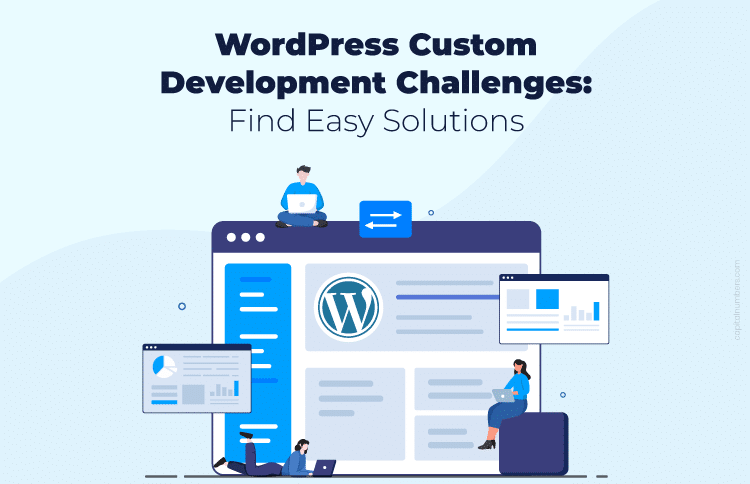Project Outsourcing Or Staff Augmentation… Which is Best for You?
Table of Contents
When rushing to complete projects, you’re probably familiar with these questions — Can we get it done faster? Can we get it done cheaper? How can we get this done more efficiently?
As you take on more challenging projects, and you start to operate right on the edge of your team’s capabilities, you may run into circumstances where the success of the projects depend entirely on whether they can be completed on time… and within budget… without sacrificing any requirements or client expectations.
This situation is made worse in a competitive niche like IT, where success can often depend on speed.
It’s a tough situation to juggle.
Usually, technology is the answer. If you can automate or eliminate certain processes through technology, that’s less wasted time and money overall. However, technology can’t solve everything — doing complicated and creative tasks at scale, for example. Or flexibly changing approaches in the middle of a project. Or pivoting to a different focus.
You and your staff or team must meet all of these challenges. And, when you ramp up and down, you’ll need the flexibility to hire or let go of workers and talent as the project requires.
This being the case, hiring in-house is not always the answer. In fact, it is almost always the most costly and least flexible option. Hiring in-house is great for your core team, but not always right for immediate or conditional needs.
So what is the answer?
We have two: staff augmentation and project outsourcing.
But wait. What’s the difference? What’s best for you?
Read on to find out.
Project Outsourcing
Let’s start with a subject that is near and dear to our hearts here at Capital Numbers: outsourcing. We love outsourcing. We recommend it to almost everyone if it makes sense to their business (it usually does).
Outsourcing the entire project allows you to entrust your entire project to a remote outsourcing partner. You’ll use your partner’s resources, including tools, hours worked, and project management systems, to complete the project. In this way, completely outsourcing a project becomes like a partnership. (Conversely, staff augmentation is more akin to hiring new employees. We’ll get to that in a minute).
So why might outsourcing your entire project be the best choice for you?
First and foremost, it gives you some space to focus resources on your core operations.
Take the typical cost reductions associated with outsourcing. Outsourcing allows you to reduce training costs simply by handing that responsibility over to your remote partner. For example, at Capital Numbers we have rigorous training, vetting, and hiring process. We undertake this process so that our clients don’t have to. They can trust that when they work with our teams, they’re working with teams similar to the ones they might have hired themselves. A good, reputable remote outsourcing partner should do the same.
Further, you don’t have to expend as much management time on outsourced projects. Your communication with your remote partner might be as little as a one-line email per day, or it might be more robust depending on your preferences. But the point is, the day to day management operations will mostly be the responsibility of your partner. They’ll be the ones taking care of the details. And consider what YOUR teams will be doing in the meantime… They’ll be working on your core projects, which leads to twice as many projects ticking along simultaneously. Plus, your outsourced project will usually only take about half the price.
Finally, you can take advantage of more opportunities in project outsourcing. Just use the abilities of your remote partner to fulfill gaps in your skillset. Just because you might not have the internal capabilities to complete certain projects, doesn’t mean you can’t take them on. You can always outsource them to your remote partner.
Moving on…
Staff Augmentation
In contrast to remote outsourcing, which is all about getting entire projects completed remotely, staff augmentation is a matter of bringing on additional remote workers to help you complete a project.
There is greater scalability in this model than in outsourcing projects to remote partners. It’s straightforward to add individual workers (or small teams) as a given project demands.
In addition to scalability, staff augmentation offers a more precise way to acquire specific skillsets. Maybe you want a project that is an 80% fit for your skills but needs to bring in a specialist for that last 20%. It can be done. In this way, you can take on more projects that otherwise you wouldn’t have been able to.
Even if you don’t need a specialist per se, IT staff augmentation is a great answer to the high turnover rate experienced by many IT companies and startups. Instead of bringing in more in-house, core staff, you can augment your team for the duration of any urgent projects. (This is also a great way to meet project deadlines if your staff is currently overwhelmed with other things).
In this way, staff augmentation offers easy integration into your internal processes. You might find it more effective to integrate staff into your way of doing things, using your specific resources, than to assign tasks to a team under someone else’s management. You’ll find that individuals or small groups can adapt quickly to your particular processes.
Finally, it’s a little easier to augment your staff in certain areas than it is to outsource entire projects to a remote partner. With staff augmentation, you need to introduce your new staff to your way of doing things, assimilate them into your systems and processes, and let them work.
Conclusion
If you’re wrestling with several IT projects, or you’re part of an industry where this sort of thing is the norm, we highly encourage you to look into either staff augmentation or remote outsourcing. Not only with both of these present an easier, more efficient way of getting your projects done, but they offer a way to fill skill gaps, reduce hiring costs, and scale up or down as the situation demands.














